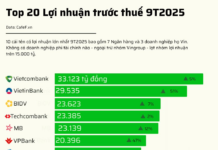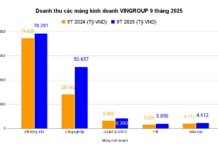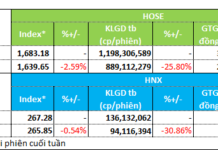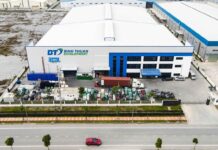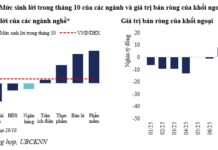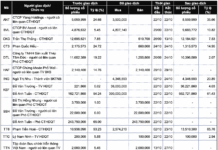According to a report by the Vietnam Automobile Manufacturers Association, in July 2024, member enterprises sold 13,788 domestically-produced and assembled cars and 15,132 completely built-up imported cars. Previously, in June 2024, the sales of domestic and imported cars were 12,962 and 13,613 units, respectively. The situation was similar in April and May when the number of imported cars sold was always 1,000-2,000 units higher than domestically-produced cars.
Reversal
Notably, data from the General Statistics Office shows that in the first seven months of this year, the output of domestically-produced and assembled cars reached only 172,200 units, a decrease of about 20,000 units compared to the same period last year and a decrease of 80,000 units compared to the same period in 2022. The low output has resulted in a stockpile of 20,000 unsold vehicles.
This is an unusual development in the automobile market as previously, sales of domestic cars often outperformed imported ones due to their price advantage and accompanying preferential policies. Now, the competitive advantage is tilting towards foreign car brands.
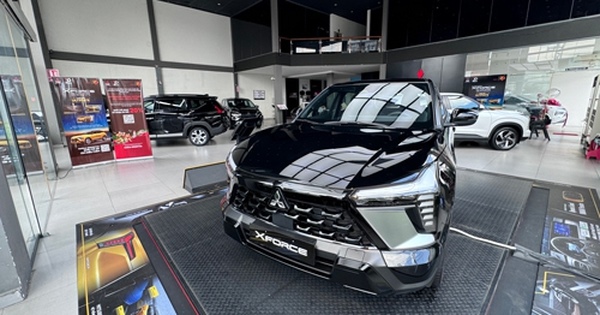
The increase in official imported cars this year threatens the market share of domestic cars |
Mr. Hoang Minh Tan, a car dealer in Ho Chi Minh City, said that if imported cars from nearby markets such as Thailand and Indonesia used to have an average price of 400-500 million VND per unit, now it has decreased to 350-450 million VND per unit. In addition to the attraction of low prices, the quality of imported cars is also an important factor influencing consumers’ purchasing decisions.
According to the observations of the Nguoi Lao Dong reporter, not only manufacturers but also importers are offering significant price reductions for many models at this time. For example, all imported MG models have been discounted by 60-170 million VND per unit, depending on the line, boosting sales significantly.
Similarly, the Xforce model of Mitsubishi recorded a doubling of sales in July 2024 compared to the previous month due to a price reduction of 20-40 million VND per unit and a cash support equivalent to 100% of the registration fee. With 1,748 units sold, Xforce became the top-selling model in July.
Other brands such as Toyota, Subaru, Volkswagen, Mitsubishi, and Suzuki have also implemented policies to support 50%-100% of the registration fee for imported models. Mr. Pham Quang Thang, Sales Director of Hanoi Automobile Joint Stock Company, opined that in the context of preferential policies for domestic car registration fees being temporarily suspended for several months, the proactive strategies of importers have boosted sales of imported cars since the beginning of the year.
Trading is more profitable than manufacturing
The goal of developing the domestic automobile industry continues to face challenges as car companies find it more advantageous to import completely built-up units instead of manufacturing, especially with the decreasing trend in car prices.
Mr. Trieu Khac Thiep, Director of Cho Tot Xe, said that many car companies are strategizing to import cars instead of manufacturing or assembling them domestically if imported models are selling well, thereby altering the sales ratio between domestic and foreign cars. In reality, many imported models from Indonesia and Thailand have a competitive edge because these countries produce a large volume of vehicles, not only for their domestic market but also for export.
Due to large-scale production, the cost in these countries is significantly lower than in Vietnam. “Companies have to make calculations and choose the most beneficial option, so the shift towards importing is becoming a trend,” Mr. Thiep commented.
A representative of Toyota Vietnam confirmed that almost 20 models of the company, which were mainly assembled domestically before, are now being imported to take advantage of the preferential 0% import tax rate.
Additionally, the company carefully considers its investment choices in manufacturing and assembling specific models in each market to achieve efficiency, for example, in Vietnam, the Vios, Veloz, Fortuner diesel engine version, and Innova manual transmission version.
Similarly, Mitsubishi, a company that previously had a large proportion of domestically assembled models, now only maintains two models: the Xpander manual transmission version and the Outlander.
According to Mr. Dao Cong Quyet, a representative of the Vietnam Automobile Manufacturers Association, the cost of producing automobiles in Vietnam is 20% higher than in other Southeast Asian countries, which is one of the barriers to increasing domestic assembly output.
Forecasts indicate that the number of completely built-up cars imported from Indonesia and Thailand will continue to rise in the coming period. Chinese enterprises are investing heavily in these two manufacturing countries to boost exports of low-cost cars to Southeast Asian countries, including Vietnam.
Meanwhile, the output of domestically-produced and assembled cars this year is expected to reach 340,000 units, unchanged from last year and a decrease of 100,000 units compared to 2022. With the decline in production output as some enterprises shift to trading, the Vietnamese automobile industry is facing competition from foreign cars in its home market.
Article and photos: NGUYEN HAI
The Domestic Auto Industry Under Threat
The imported car market is booming, and it’s outpacing the domestic automotive industry. But why are consumers increasingly opting for imported vehicles over locally-assembled cars? This intriguing trend warrants further investigation, as it could significantly impact the automotive landscape in the country.












